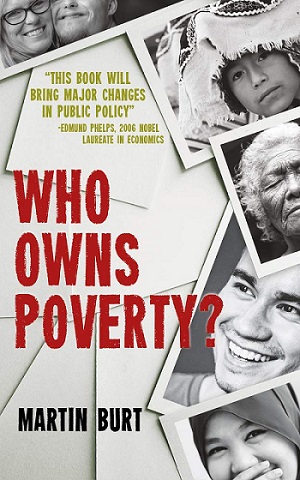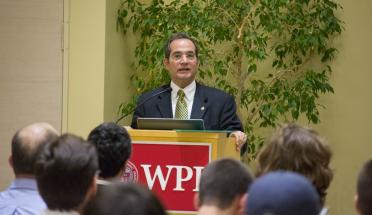Martin Burt, visiting professor of social entrepreneurship at WPI, is founder and chief executive officer of Fundación Paraguaya, a nonprofit devoted to the promotion of social entrepreneurship and economic self-reliance to eliminate poverty around the world.
A pioneer in applying new poverty metrics, microfinance, micro-franchise, youth entrepreneurship, financial literacy and financially self-sufficient agricultural technical vocational methodologies, Burt shares what he has learned studying cultures around the world in his new book, Who Owns Poverty?
Published in September, the memoir about his work to eradicate multidimensional poverty through his Poverty Stoplight initiative poses the question: What if nearly everything we thought we knew about poverty was wrong?
Burt took time out recently from his work in Paraguay, where he grew up and lives, to answer questions about the book. In his native country, as well as other countries he visits, Burt helps families reach their potential using mobile technology and social innovation to design their own strategy out of poverty.
Could you explain what the book is about?

It is about a revolutionary way for technology to allow the poor to do two things deemed impossible and implausible before–to measure their own poverty and come up with their own customized plan to overcome their own deprivation.
What inspired it?
I was born and raised in Paraguay and come from a privileged position. My family was always very socially concerned and committed to giving back to society. I come from a tradition of activists, both politically and socially.
It is amazing that everybody is poor in some ways and not poor in other ways. I was inspired by talking with poor people and learning that their definition of poverty is different from the government’s definition.
How does it relate to your work in finding solutions to eradicate poverty?
In consultation with our microfinance clients, who are the real experts, we developed the Poverty Stoplight. It is a completely new poverty measurement tool and coaching methodology. It allows poor families—using a visual survey on a tablet with pictures and the colors red, yellow, and green—to self-diagnose their level of poverty in six different areas, including income and employment, health and environment, education and culture, housing and infrastructure, organization and participation, and interiority and motivation. Families construct a dashboard instead of an aggregated index constructed by the government, and they develop a customized plan to utilize their strengths and overcome their deprivations according to their own priorities. This is revolutionary.
Some families who earn income above the income line are still poor in other areas. Some families are below the income line and yet are thriving.
We started with a big question: What is poverty? In literature I reviewed, and in working with tens of thousands of women-led microenterprises, the definition of poverty in academics did not coincide with the definition of people living at the bottom of the pyramid. I thought, ‘Why don’t we ask them to tell us what it means not to be poor?’ I’ve done this in 29 countries. Every country has its local definitions of what it means to them not to be poor. Self-diagnosis is intuitive and easy with a tablet and a phone and even a visual survey. Families can diagnose themselves in 20 minutes.
Did you come up with any findings that surprised you?
One surprising thing that we found is that in most low-income families, their No. 1 priority is not necessarily to generate more income. It is to have savings. People living under a lot of stress need savings to confront emergencies. Life from the perspective of poor households looks different than from the perspective of the welfare state.
What lessons from the book can you impart to the WPI students you work with?
Find inspiration in the work you do and live a life with purpose and meaning. Understand where people are coming from and be more empathetic. Empathy and compassion will help students learn to put themselves in other people’s shoes. It goes very clearly with WPI’s Great Problems seminar focus for first-year students. It’s why so many WPI students are attracted to the Poverty Spotlight.
WPI’s Project-Based Learning model, like Poverty Spotlight, helps students understand the needs of people and why it is important to not come up with a top-down solution. Instead of saying, “Hey, I have a solution.” WPI students ask, “What do you need?”
It is an important way for them to have a tool to understand the intersection of engineering projects and social problems. Many times engineering solutions are created in the lab, on the drawing table, or on a computer, but people don’t know how it will affect people living in towns or in the villages. For WPI students, Poverty Spotlight is a way of understanding where people’s needs are and also a way to find a purpose to use engineering to help people solve their problems.
-By Paula Owen

